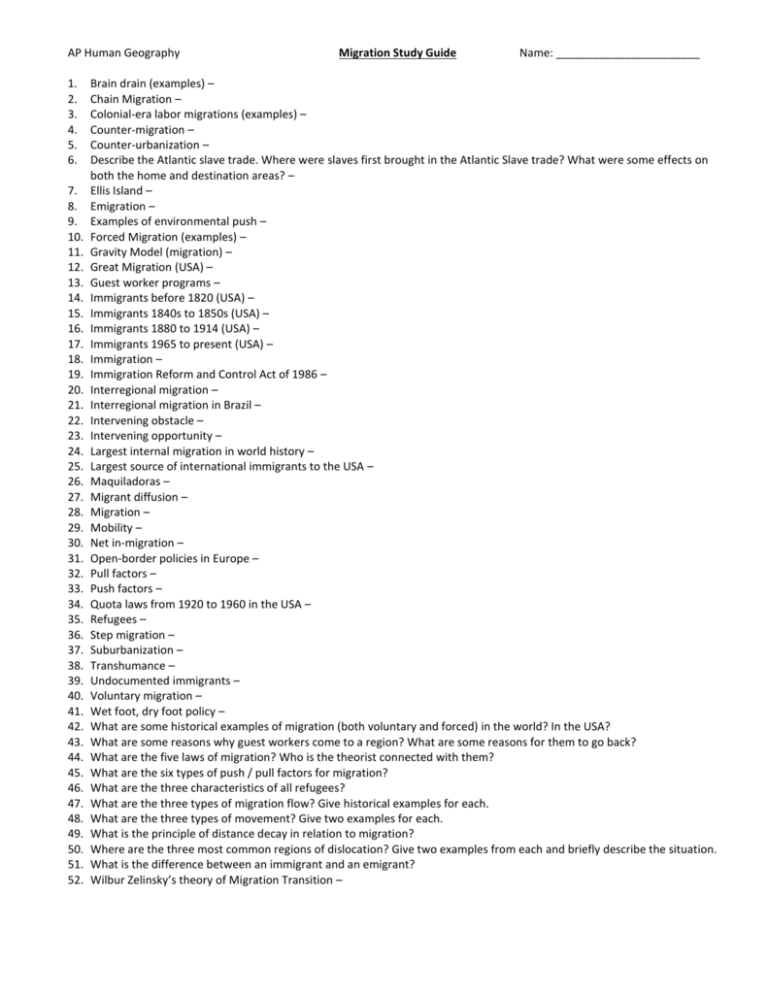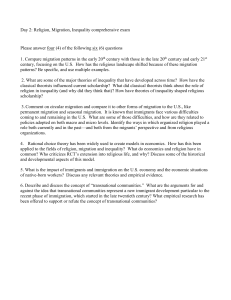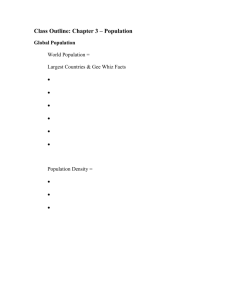AP Human Geography Migration Study Guide Name: 1. Brain drain
advertisement

AP Human Geography 1. 2. 3. 4. 5. 6. 7. 8. 9. 10. 11. 12. 13. 14. 15. 16. 17. 18. 19. 20. 21. 22. 23. 24. 25. 26. 27. 28. 29. 30. 31. 32. 33. 34. 35. 36. 37. 38. 39. 40. 41. 42. 43. 44. 45. 46. 47. 48. 49. 50. 51. 52. Migration Study Guide Name: _______________________ Brain drain (examples) – Chain Migration – Colonial-era labor migrations (examples) – Counter-migration – Counter-urbanization – Describe the Atlantic slave trade. Where were slaves first brought in the Atlantic Slave trade? What were some effects on both the home and destination areas? – Ellis Island – Emigration – Examples of environmental push – Forced Migration (examples) – Gravity Model (migration) – Great Migration (USA) – Guest worker programs – Immigrants before 1820 (USA) – Immigrants 1840s to 1850s (USA) – Immigrants 1880 to 1914 (USA) – Immigrants 1965 to present (USA) – Immigration – Immigration Reform and Control Act of 1986 – Interregional migration – Interregional migration in Brazil – Intervening obstacle – Intervening opportunity – Largest internal migration in world history – Largest source of international immigrants to the USA – Maquiladoras – Migrant diffusion – Migration – Mobility – Net in-migration – Open-border policies in Europe – Pull factors – Push factors – Quota laws from 1920 to 1960 in the USA – Refugees – Step migration – Suburbanization – Transhumance – Undocumented immigrants – Voluntary migration – Wet foot, dry foot policy – What are some historical examples of migration (both voluntary and forced) in the world? In the USA? What are some reasons why guest workers come to a region? What are some reasons for them to go back? What are the five laws of migration? Who is the theorist connected with them? What are the six types of push / pull factors for migration? What are the three characteristics of all refugees? What are the three types of migration flow? Give historical examples for each. What are the three types of movement? Give two examples for each. What is the principle of distance decay in relation to migration? Where are the three most common regions of dislocation? Give two examples from each and briefly describe the situation. What is the difference between an immigrant and an emigrant? Wilbur Zelinsky’s theory of Migration Transition –





